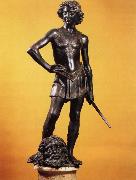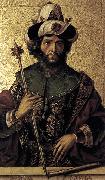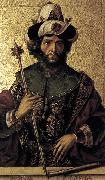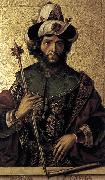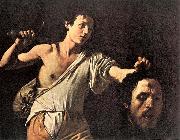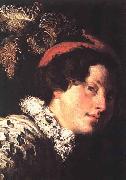Wholesale Oil Painting No Minimum |
|||||||||||
|
|
|||||||||||

|
|||||||||||
|
|
|
||||||||
Andrea della Verrocchio1435-1488 Italian Andrea della Verrocchio Gallery |
||||||||
|
|
||||||||
David
David Painting ID:: 44853 |
mk176
c.1470
Bronze
mk176 c.1470 Bronze |
|||||||
|
|
||||||||
Francisco de Zurbaran1598-1664 Spanish Francisco de Zurbaran Galleries Spanish baroque painter, active mainly at Llerena, Madrid, and Seville. He worked mostly for ecclesiastical patrons. His early paintings, including Crucifixion (1627; Art Inst., Chicago), St. Michael (Metropolitan Mus.), and St. Francis (City Art Museum, St. Louis), often suggest the austere simplicity of wooden sculpture. The figures, placed close to the picture surface, are strongly modeled in dramatic light against dark backgrounds, indicating the influence of Caravaggio. They were clearly painted as altarpieces or devotional objects. In the 1630s the realistic style seen in his famous Apotheosis of St. Thomas Aquinas (1631; Seville) yields to a more mystical expression in works such as the Adoration of the Shepherds (1638; Grenoble); in this decade he was influenced by Ribera figural types and rapid brushwork. While in Seville, Zurbur??n was clearly influenced by Velazquez. After c.1640 the simple power of Zurbaran work lessened as Murillo influence on his painting increased (e.g., Virgin and Child with St. John, Fine Arts Gall., San Diego, Calif.). There are works by Zurbar??n in the Hispanic Society of America, New York City; the National Gallery, Washington, D.C.; and the Philadelphia Museum of Art.. |
||||||||
|
|
||||||||
|
|
david
david Painting ID:: 65730 |
1641-1658
oiln on canvas
private collection, madrid
se 1641-1658 oiln on canvas private collection, madrid se |
||||||
|
|
||||||||
Pedro Berruguete(c. 1450 - 1504) was a Spanish painter; his art is regarded as a transitional style between gothic and Renaissance. Born in Paredes de Nava, Spain, he went to Italy in 1480 and worked in Federigo da Montefeltro's court in Urbino, where he could see some works by Melozzo da Forle. He came back to Spain in 1482 and painted in several cities, such as Sevilla, Toledo and Ávila. He was the father of an important sculptor, Alonso Berruguete, considered the most important sculptor in Renaissance Spain. |
||||||||
|
|
||||||||
|
|
David
David Painting ID:: 78657 |
ca. 1500(1500)
Medium Oil on wood
cyf ca. 1500(1500) Medium Oil on wood cyf |
||||||
|
|
||||||||
Pedro Berruguete(c. 1450 - 1504) was a Spanish painter; his art is regarded as a transitional style between gothic and Renaissance. Born in Paredes de Nava, Spain, he went to Italy in 1480 and worked in Federigo da Montefeltro's court in Urbino, where he could see some works by Melozzo da Forle. He came back to Spain in 1482 and painted in several cities, such as Sevilla, Toledo and Ávila. He was the father of an important sculptor, Alonso Berruguete, considered the most important sculptor in Renaissance Spain. |
||||||||
|
|
||||||||
|
|
David
David Painting ID:: 79327 |
. 1500(1500)
Medium Oil on wood
cyf . 1500(1500) Medium Oil on wood cyf |
||||||
|
|
||||||||
BERRUGUETE, PedroSpanish Early Renaissance Painter, ca.1450-1504 Pedro Berruguete (c. 1450 ?C 1504) was a Spanish painter, his art is regarded as a transitional style between gothic and renaissance. Born in Paredes de Nava, Spain, he went to Italy in 1480 and worked in Federigo da Montefeltro's court in Urbino. He came back Spain 1482 and painted in several cities as Sevilla, Toledo and Ávila. He was father of an important sculptor, Alonso Berruguete, considered the most important sculptor in Renaissance Spain. |
||||||||
|
|
||||||||
|
|
David
David Painting ID:: 79697 |
Date ca. 1500(1500)
Medium Oil on wood
cyf Date ca. 1500(1500) Medium Oil on wood cyf |
||||||
|
|
||||||||
CaravaggioItalian Baroque Era Painter, ca.1571-1610 Italian painter. After an early career as a painter of portraits, still-life and genre scenes he became the most persuasive religious painter of his time. His bold, naturalistic style, which emphasized the common humanity of the apostles and martyrs, flattered the aspirations of the Counter-Reformation Church, while his vivid chiaroscuro enhanced both three-dimensionality and drama, as well as evoking the mystery of the faith. He followed a militantly realist agenda, rejecting both Mannerism and the classicizing naturalism of his main rival, Annibale Carracci. In the first 30 years of the 17th century his naturalistic ambitions and revolutionary artistic procedures attracted a large following from all over Europe. |
||||||||
|
|
||||||||
|
|
David
David Painting ID:: 88422 |
between 1606(1606) and 1607(1607)
Medium Oil on wood
Dimensions Height: 90.5 cm (35.6 in). Width: 116 cm (45.7 in).
cjr between 1606(1606) and 1607(1607) Medium Oil on wood Dimensions Height: 90.5 cm (35.6 in). Width: 116 cm (45.7 in). cjr |
||||||
|
|
||||||||
Domenico FettiItalian painter , Rome 1589 - Venice 1623 was an Italian Baroque painter active mainly in Rome, Mantua and Venice. Born in Rome to a little-known painter, Pietro Fetti, Domenico is said to have apprenticed initially under Ludovico Cigoli, or his pupil Andrea Commodi in Rome from circa 1604-1613. He then worked in Mantua from 1613 to 1622, patronized by the Cardinal, later Duke Ferdinando I Gonzaga. In the Ducal Palace, he painted the Miracle of the Loaves and Fishes. The series of representations of New Testament parables he carried out for his patron's studiolo gave rise to a popular specialty, and he and his studio often repeated his compositions. In August or September 1622, his feuds with some prominent Mantuans led him to move to Venice, which for the first few decades of the seventeenth century had persisted in sponsoring Mannerist styles (epitomized by Palma the Younger and the successors of Tintoretto and Veronese). Into this mix, in the 1620s?C30s, three "foreigners"??Fetti and his younger contemporaries Bernardo Strozzi and Jan Lys??breathed the first influences of Roman Baroque style. They adapted some of the rich coloration of Venice but adapted it to Caravaggio-influenced realism and monumentality. In Venice where he remained despite pleas from the Duke to return to Mantua, Fetti changed his style: his formalised painting style became more painterly and colourful. |
||||||||
|
|
||||||||
|
|
David
David Painting ID:: 95769 |
circa 1620(1620)
Medium oil on canvas
cyf circa 1620(1620) Medium oil on canvas cyf |
||||||
|
|
||||||||
Domenico FettiItalian painter , Rome 1589 - Venice 1623 was an Italian Baroque painter active mainly in Rome, Mantua and Venice. Born in Rome to a little-known painter, Pietro Fetti, Domenico is said to have apprenticed initially under Ludovico Cigoli, or his pupil Andrea Commodi in Rome from circa 1604-1613. He then worked in Mantua from 1613 to 1622, patronized by the Cardinal, later Duke Ferdinando I Gonzaga. In the Ducal Palace, he painted the Miracle of the Loaves and Fishes. The series of representations of New Testament parables he carried out for his patron's studiolo gave rise to a popular specialty, and he and his studio often repeated his compositions. In August or September 1622, his feuds with some prominent Mantuans led him to move to Venice, which for the first few decades of the seventeenth century had persisted in sponsoring Mannerist styles (epitomized by Palma the Younger and the successors of Tintoretto and Veronese). Into this mix, in the 1620s?C30s, three "foreigners"??Fetti and his younger contemporaries Bernardo Strozzi and Jan Lys??breathed the first influences of Roman Baroque style. They adapted some of the rich coloration of Venice but adapted it to Caravaggio-influenced realism and monumentality. In Venice where he remained despite pleas from the Duke to return to Mantua, Fetti changed his style: his formalised painting style became more painterly and colourful. |
||||||||
|
|
||||||||
|
|
David
David Painting ID:: 95772 |
circa 1620(1620)
Medium oil on canvas
cyf circa 1620(1620) Medium oil on canvas cyf |
||||||
|
|
||||||||
Stefano MagnascoItalian, born circa Genoa 1635-1665 |
||||||||
|
|
||||||||
|
|
David
David Painting ID:: 96823 |
1862(1862)
Medium oil on panel
Dimensions 74 X 48 cm
cyf 1862(1862) Medium oil on panel Dimensions 74 X 48 cm cyf |
||||||
|
|
||||||||
|
Stefano Magnasco Italian, born circa Genoa 1635-1665 David 1862(1862) Medium oil on panel Dimensions 74 X 48 cm cyf |
||||||||
|
|
||||||||
|
Prev Next
|
||||||||
|
|
||||||||
|
Related Paintings to Stefano Magnasco :. |
||||||||
|
|
||||||||
|
CONTACT US |
